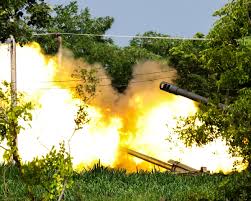https://theworldfinancialforum.com/participate/

Fire President Trump said on Saturday that both countries had agreed to a halt in the fighting. But on Sunday morning, skirmishes erupted once more.
Recent weeks have seen a volatile oscillation between hope and conflict along the Thailand–Cambodia border, where temporary cease‑fire promises have repeatedly unraveled, despite official declarations of peace.
Table of Contents
ToggleA Brief Flare of Conflict
The latest confrontation traces back to late May 2025, when a skirmish near Chang Bok resulted in the death of a Cambodian soldier, reigniting a long-simmering territorial dispute. Since then, exchanges of artillery, small-arms fire, and ground troop movements have been reported frequently along the approximately 817 km contested border.WikipediaIndia Today
As clashes escalated, both countries began evacuating civilians en masse—Thailand estimated that more than 131,000 residents fled border villages, while over 37,000 Cambodians were displaced, compelling urgent regional mediation.The Washington PostIndia Today
Cease‑Fire Attempts and Mutual Accusations
On July 28, 2025, following mediation by Malaysia’s Prime Minister Anwar Ibrahim, an “immediate and unconditional” cease‑fire was declared and set to take effect at midnight. The agreement was hailed as a diplomatic breakthrough.UPIIndia TodayABC
However, the calm proved elusive. Within hours, both sides accused each other of resuming attacks. Thailand’s army alleged several early-morning incursions by Cambodian forces, prompting a forceful rebuttal from Phnom Penh.India TodayUPI+1
Reports of sporadic gunfire persisted in border provinces like Sisaket and Oddar Meanchey in the days that followed. While diplomats noted that most of the border remained relatively calm, the cease‑fire’s fragility was clear.Al Jazeera+1euronews
ASEAN’s Role and Monitoring Efforts
By early August, both nations agreed to deploy ASEAN observer teams to monitor the cease‑fire, signaling a commitment to regional accountability and de-escalation.Al Jazeera
Economic Fallout: Trade Disrupted and Events Canceled
Beyond security concerns, the hostilities have struck at the heart of regional commerce. In 2024, bilateral trade between Thailand and Cambodia exceeded US$3.9 billion, flowing through numerous land checkpoints now largely closed. Early projections point to potential losses worth up to US$1.7 billion if disruptions persist.ASEAN Briefing
In a tangible setback to Cambodia’s soft-power ambitions, the Asian Tour canceled its LIV Golf-backed International Series tournament slated in Cambodia, citing safety concerns stemming from the border turbulence.Golf Monthly
New Leadership Brings Hope… But Challenges Remain
Thailand’s newly appointed Prime Minister, Anutin Charnvirakul, has signaled firm intent to stabilize both the economy and foreign policy. Economic stimulus is expected alongside earnest efforts to reduce tensions with Cambodia.Reuters
Yet, with nationalism running high and mistrust entrenched, achieving lasting peace remains a steep climb.
Why This Matters
Humanitarian Crisis: Displacement of hundreds of thousands has induced a humanitarian emergency on both sides of the border.
Economic Damage: A collapse in trade and the postponement of major events are inflicting economic wounds that will outlast arms.
Diplomatic Fragility: Repeated violations of cease‑fire terms, even after high‑profile mediation, underscore the volatility of regional diplomacy.
ASEAN’s Role: The deployment of regional observers marks a significant test for ASEAN’s capacity to manage interstate conflict.
Stakes for Stability: Peace isn’t just a local need—it’s critical for regional economies, tourism, and cross-border collaboration.
In conclusion, the Thailand–Cambodia border crisis highlights how easily hopes for peace can fracture, especially when deep-seated historic disputes and national pride collide. Regional institutions like ASEAN, along with new leadership, have created openings for resolution—but turning those into concrete peace will require sustained goodwill, clear demarcations, and collaborative economic rebuilding.
The current conflict may seem like a sudden escalation, but the Thailand–Cambodia border has long been fraught with tension. The roots of the territorial dispute date back to colonial-era boundary demarcations—particularly disputes surrounding the Preah Vihear Temple, which the International Court of Justice awarded to Cambodia in 1962. Despite the ruling, nationalist sentiment in Thailand has often fueled resentment, with right-wing groups periodically reviving irredentist claims.
Periodic flare-ups over the past two decades—most notably in 2008 and 2011—have led to dozens of casualties and thousands of evacuations. The current 2025 flare-up, however, is notable for the intensity of firepower, civilian involvement, and the scale of misinformation spreading on both sides via social media.